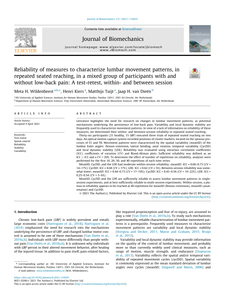Background Little is known about the nature and reactions to sexual abuse of children with intellectual disability (ID). The aim was to fill this gap. Method Official reports of sexual abuse of children with ID in state care were examined (N = 128) and compared with children without ID (N = 48). Results Clear signs of penetration or genital touching by male (adolescent) peers or (step/foster) fathers were found in most ID reports. Victims often received residential care and disclosed themselves. Type of perpetrator seemed to affect the nature and reaction to the abuse. Cases of children with and without ID seemed to differ in location and reports to police. Conclusions Screening of (foster)homes seems crucial. Residential facilities should find a balance between independence of children and protection. Care providers should be trained in addressing sexual issues and sexual education, accounting for different types of perpetrators (peers/adults). Uniform reporting guidelines are needed.
DOCUMENT

Looking at the trends in the four quarters of 2021, it is clear that (partial) lockdowns of sectors have been very bad news for business performance. Also not directly hit sectors like the care and service industry underperformed. The horeca, retail and cultural sectors were hit hardest by recurring lockdowns. Business services and technical professionals were more resilient. We have observed a strong decrease in sales, net margins, investment (willingness), solvability and entrepreneurial wages in periods of lockdown. They are (far) below the levels of the pre-Corona year 2019. Start-ups and the self-employed were the most vulnerable. The type of market in which entrepreneurs operate is of great importance. Turnover, net margins and entrepreneurial wages in the B2B markets are significantly higher than in the B2C markets. We were unable to establish any direct positive effects of the degree of digitization of businesses on net margins (Q2 special). Rather, the utilization of too many applications seems to deteriorate business performance. Entrepreneur digital skills are able to predict net margins better and positively. We will repeat this special in the near future as many businesses have only recently started to digitize. Entrepreneurs have lost their way in the forest of local, provincial, national and EU subsidies (Q3 special), halving the number of applications compared to 2015. Tax deduction programs seem far more effective than the dazzling diversity of subsidies. Owners of businesses with staff are especially willing to pay specialized advisors to detect and apply for subsidies on a “no cure, no pay” basis. There appears to be a strong link between the self-estimated sales skills of entrepreneurs and their turnover, and the short-term growth expectations (Q4 special). The more experienced and skilled in sales, the higher the quarterly turnover and the higher the growth expectation. However, 62% of entrepreneurs are unskilled or untrained in sales skills. And 30% of entrepreneurs indicate that they are not effective at selling. Overall, the lockdowns resulted in a growing number of entrepreneurs developing into marginal companies. Financial reserves, such as saved pensions and private/partner/family capital were depleted. Lockdowns also increased firm and private debts, which the majority of companies are unable to repay. Poverty is knocking at the door of many Dutch entrepreneurs and, even with the support of a partner income, only 4 out of 10 entrepreneurs earn a more than marginal living. Our main recommendations in the quarterly reports of 2021 are: 1. Strengthen the solvability of micro-businesses by converting tax debts in subordinate loans. 2. Pro-actively contact entrepreneurs to support them with support possibilities, (poverty alleviation) allowances and free coaching and sales, financial and digital training possibilities. 3. Start proactively discussing the viability of the firm and business model and possible ways to resolve debts. There is strong demand and shortages on the labor market, which makes this the perfect time to guide depleted entrepreneurs to (far) better paid jobs.
DOCUMENT
Literature highlights the need for research on changes in lumbar movement patterns, as potential mechanisms underlying the persistence of low-back pain. Variability and local dynamic stability are frequently used to characterize movement patterns. In view of a lack of information on reliability of these measures, we determined their within- and between-session reliability in repeated seated reaching. Thirty-six participants (21 healthy, 15 LBP) executed three trials of repeated seated reaching on two days. An optical motion capture system recorded positions of cluster markers, located on the spinous processes of S1 and T8. Movement patterns were characterized by the spatial variability (meanSD) of the lumbar Euler angles: flexion–extension, lateral bending, axial rotation, temporal variability (CyclSD) and local dynamic stability (LDE). Reliability was evaluated using intraclass correlation coefficients (ICC), coefficients of variation (CV) and Bland-Altman plots. Sufficient reliability was defined as an ICC ≥ 0.5 and a CV < 20%. To determine the effect of number of repetitions on reliability, analyses were performed for the first 10, 20, 30, and 40 repetitions of each time series. MeanSD, CyclSD, and the LDE had moderate within-session reliability; meanSD: ICC = 0.60–0.73 (CV = 14–17%); CyclSD: ICC = 0.68 (CV = 17%); LDE: ICC = 0.62 (CV = 5%). Between-session reliability was somewhat lower; meanSD: ICC = 0.44–0.73 (CV = 17–19%); CyclSD: ICC = 0.45–0.56 (CV = 19–22%); LDE: ICC = 0.25–0.54 (CV = 5–6%). MeanSD, CyclSD and the LDE are sufficiently reliable to assess lumbar movement patterns in single-session experiments, and at best sufficiently reliable in multi-session experiments. Within-session, a plateau in reliability appears to be reached at 40 repetitions for meanSD (flexion–extension), meanSD (axial-rotation) and CyclSD.
MULTIFILE
